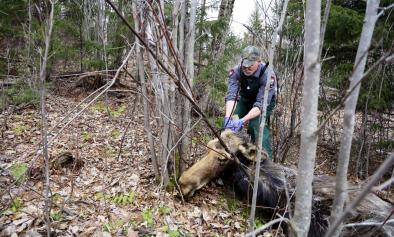Science Source
Causes of warm-edge range limits: systematic review, proximate factors and implications for climate change
- Synthesizes the known causes of species' warm-edge range limits, with emphasis on the underlying mechanisms (proximate causes)
- Searches the literature for studies testing the causes of warm-edge range limits
- Identifies 125 studies that address the causes of warm-edge limits, from a search including > 4000 studies
- Finds that among the species in these studies, abiotic factors are supported more often than biotic factors in setting species range limits at warm edges, in contrast to the widely held view that biotic factors are more important
- Finds in addition, only 23 studies (61 species) identified proximate causes of these limits, and these overwhelmingly support physiological tolerances to abiotic factors (primarily temperature)
 Number of species (out of 178) for which various abiotic and biotic factors were examined (black bars) and supported (grey bars) as setting their warm-edge range limits, from a global set of studies examining ≤ 10 species. Note that a single species may have been examined for (and may support) more than one factor.
Number of species (out of 178) for which various abiotic and biotic factors were examined (black bars) and supported (grey bars) as setting their warm-edge range limits, from a global set of studies examining ≤ 10 species. Note that a single species may have been examined for (and may support) more than one factor.
Related Content
Science Source
| Global Change Biology
Decadal-scale phenology and seasonal climate drivers of migratory baleen whales in a rapidly warming marine ecosystem
Daniel E. Pendleton, Morgan W. Tingley, Laura C. Ganley et al
Headline

May 19, 2022 | Climate Nexus Hot News
Climate Change Great For Winter Ticks, Very Bad For Moose Calves
Science Source
Climate change increases cross-species viral transmission risk
Colin J. Carlson, Gregory F. Albery, Cory Merow et al
Science Source
| Journal of Animal Ecology
Climate change affects bird nesting phenology: Comparing contemporary field and historical museum nesting records
John M. Bates, Mason Fidino, Laurel Nowak-Boyd et al


